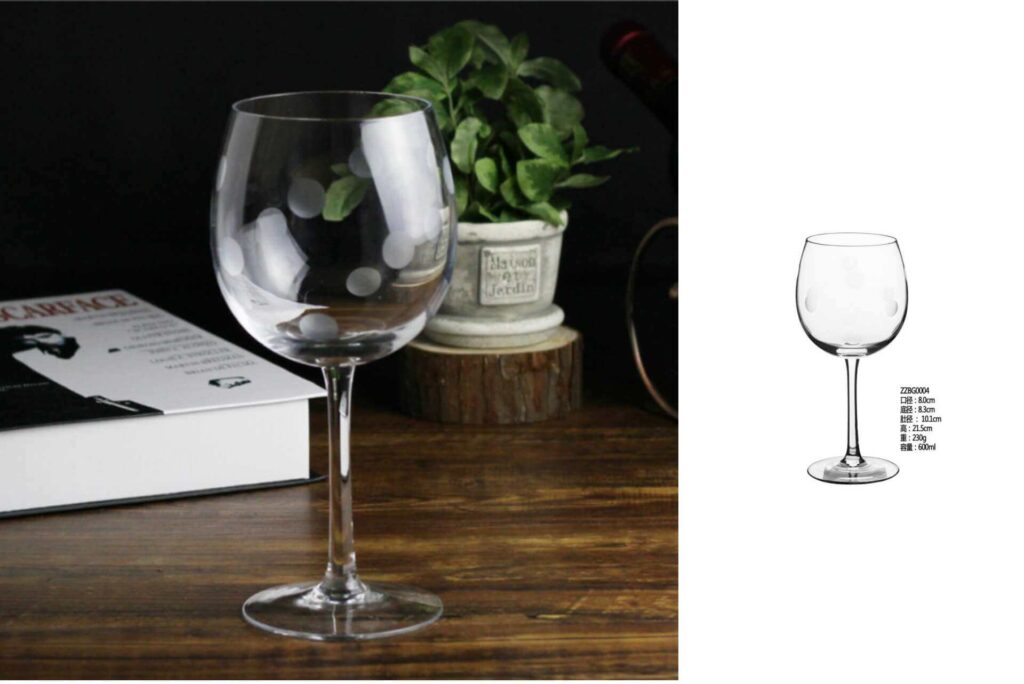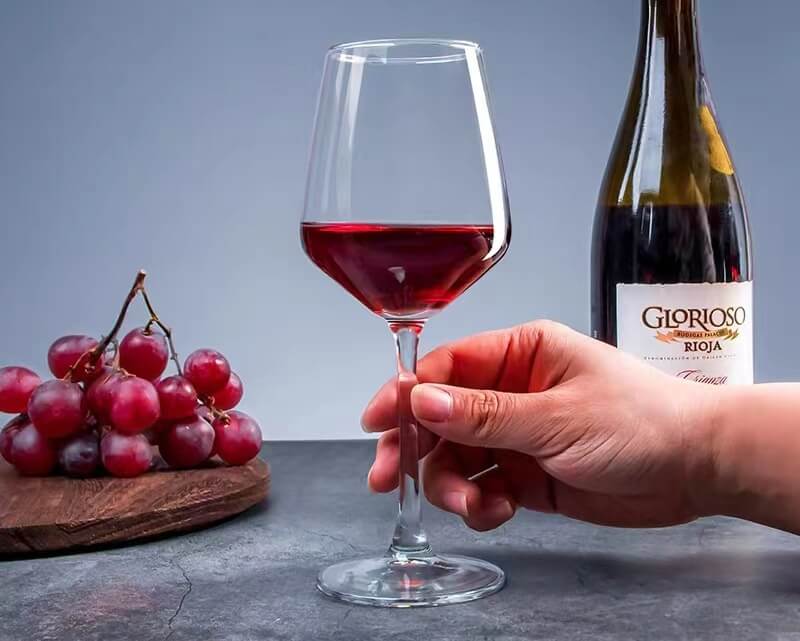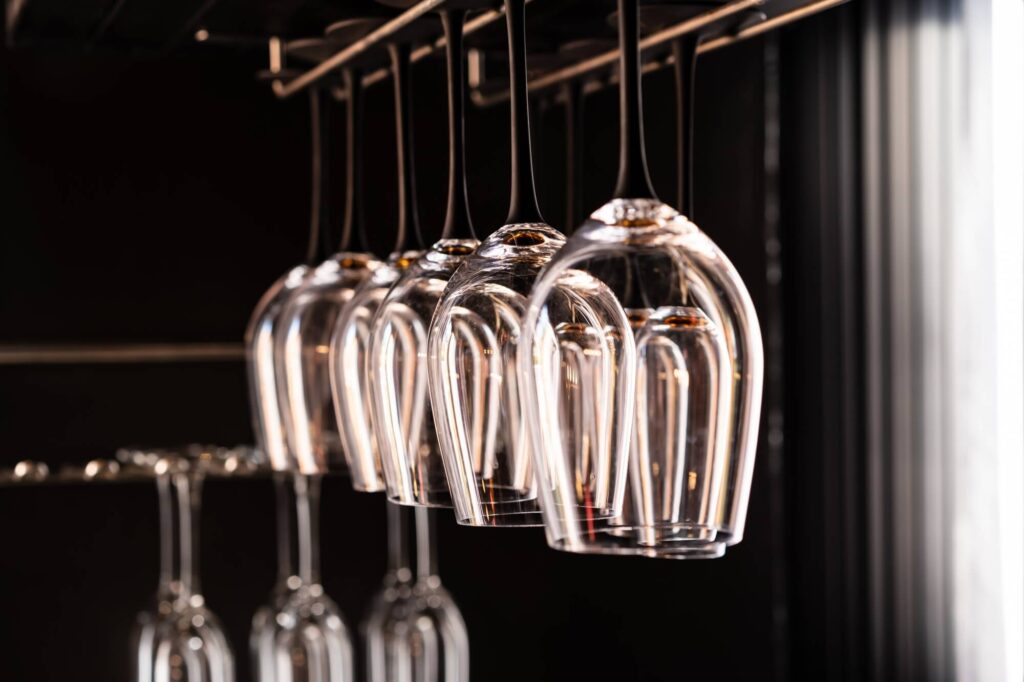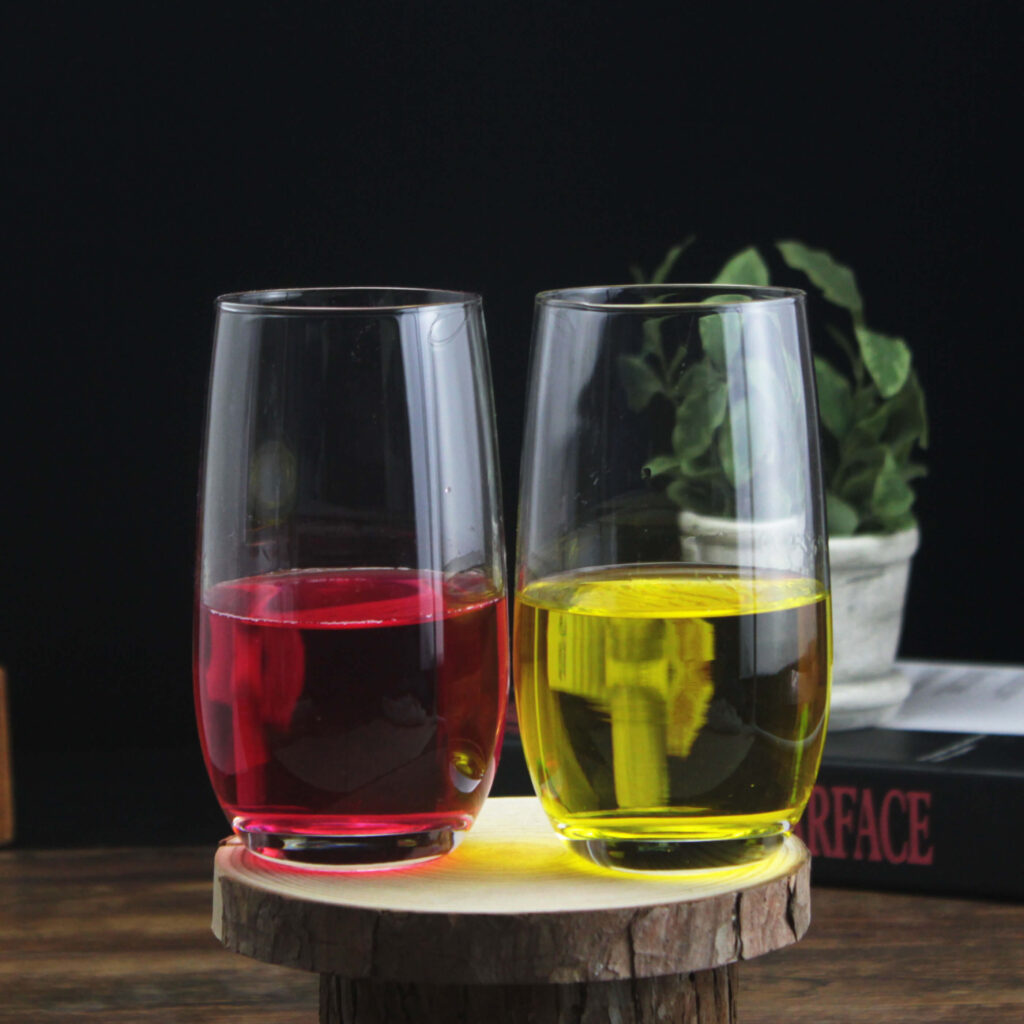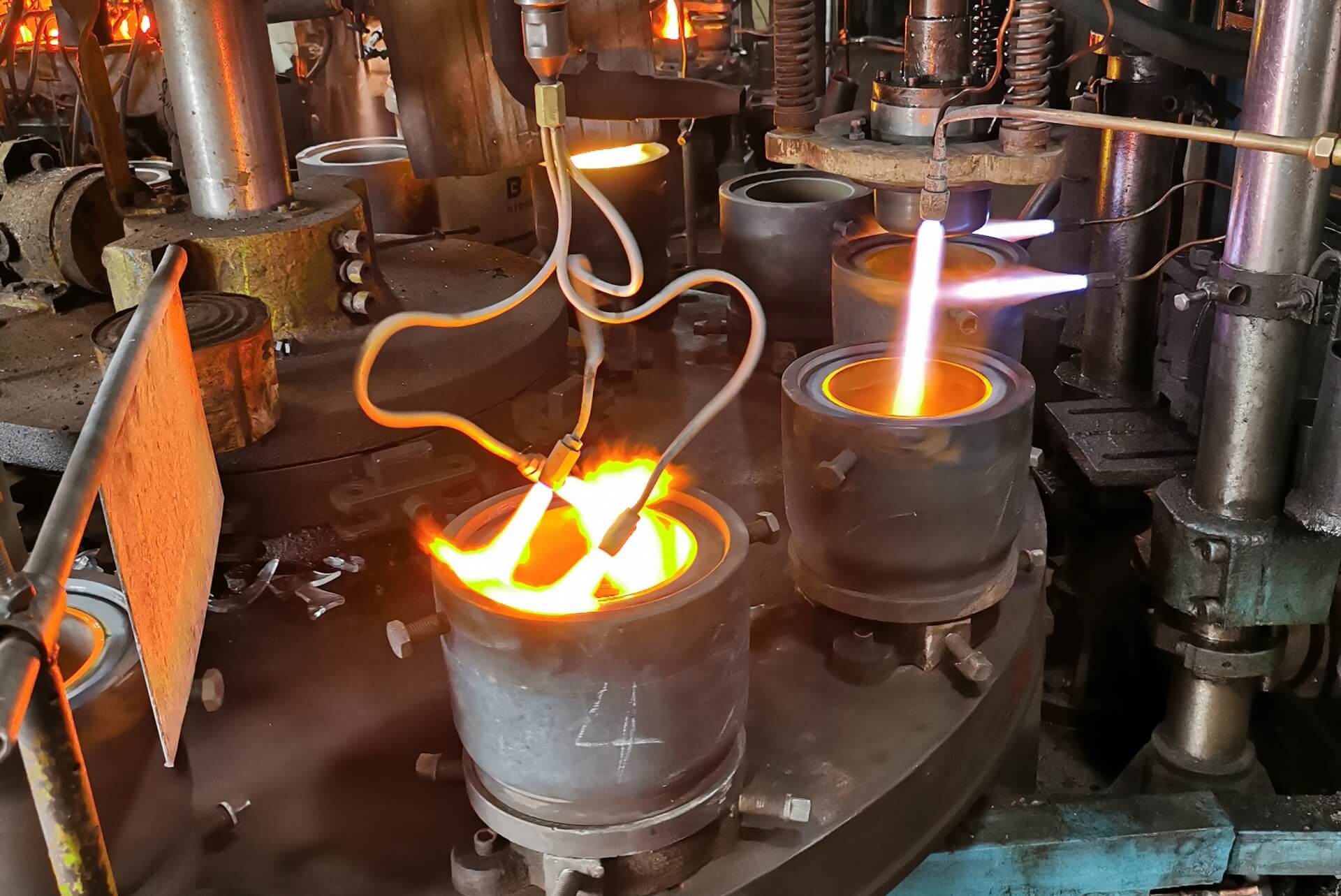Wine glasses, more than just a vessel for our favorite vintages, are a fusion of art and science. In this article, we delve into the intricacies of wine glass design, focusing on the purpose and importance of stems.
Generally speaking, why do wine glasses have stems? The reasons are:
- To prevent the hands’ body heat from altering the temperature
- To facilitate the swirling of wine
- To show the elegance in drinking
- For the Tradition of Hanging Wine Glasses Upside Down
The Significance of the Stem in Wine Glasses
What is the Point of a Stem on a Wine Glass?
The stem of a wine glass is a feature steeped in both tradition and functionality. Its primary purpose is to provide a way to hold the glass without affecting the wine’s temperature. Human hands can easily transfer heat, which can alter the flavor profile of the wine, especially important for wines sensitive to temperature changes like whites and rosés.
Benefits of Stemmed Glassware
Stems in wine glasses offer several benefits enhancing the overall wine drinking experience.
Firstly, they allow for better temperature control. By holding the stem, one avoids warming the wine, which is crucial for maintaining the intended flavor and aroma, especially in wines served chilled.
From the research on Eater:
The case for stems
“Stemmed glasses should be viewed as a tool for having a better quality wine experience,” says Cha McCoy, sommelier and founder of consulting company Cha Squared LLC and the Communion dinner series. According to sommeliers, pouring wine at the right temperature is key to letting its nuances shine through. Having your hand directly on the bowl of a wine glass (the only possibility with stemless glasses) will increase the temperature of the wine and potentially interfere with the flavor.
Secondly, stems facilitate the swirling of wine, essential for aerating it and releasing its bouquet. This action is not just a part of wine-tasting rituals but a practical way to enhance the flavor and aroma profile of the wine.
Wine Glass Aesthetics and Design
Beyond functionality, the stem of a wine glass plays a significant role in its aesthetic appeal and design.
The elegance of a long, slender stem can transform an ordinary wine drinking experience into a refined, sophisticated affair.
From the perspective of design, the stem contributes to the balance and stability of the glass, allowing for a more enjoyable and spill-free wine tasting experience. The length, thickness, and shape of the stem can vary, offering a range of styles from classic to contemporary, each catering to different preferences and occasions.
This diversity in design not only reflects the evolving tastes of wine enthusiasts but also showcases the craftsmanship and innovation in glassware manufacturing.
Handling and Etiquette of Stemmed Wine Glasses
Proper Way to Hold a Wine Glass
The art of holding a wine glass begins with the stem.
Grasping the stem between your thumb, index, and middle finger allows for a delicate and balanced grip, which not only enhances the visual pleasure but also prevents the warmth of your hand from altering the wine’s temperature. This practice is essential for wine connoisseurs, as it ensures the wine’s flavor and aroma are experienced as intended by the winemaker.
Why You Shouldn’t Fill a Wine Glass All the Way?
Filling a wine glass to the brim is a common faux pas in the world of wine tasting.
A glass should only be filled to the widest part of the bowl, which allows for ample space to swirl the wine. Swirling oxygenates the wine, unlocking its aromas. Overfilling restricts this action and can lead to an underwhelming sensory experience and the practical inconvenience of spills.
The Tradition of Hanging Wine Glasses Upside Down
Hanging wine glasses upside down is not just a space-saving technique; it’s a method steeped in practicality. This practice keeps the glass free from dust and other contaminants, ensuring a clean vessel for every pour.
Additionally, it helps in preventing accidental damage to the delicate rim of the glass, preserving its integrity and ensuring a perfect sip every time.
Wine Serving Etiquette and Practices
Wine serving etiquette is a blend of tradition and practicality. It begins with choosing the right glass for the type of wine being served, as different shapes can enhance different varieties of wine. Serving wine at the correct temperature is crucial, and this is where the stem plays a vital role.
Additionally, the etiquette extends to the pouring, which should be done gently to avoid aerating the wine too much, and to the serving order – traditionally, ladies first, followed by gentlemen, and finally the host.
Stemless Wine Glasses: Pros and Cons
Why Some Prefer Stemless Wine Glasses?
Stemless wine glasses have gained popularity for their practicality and modern aesthetic. Many appreciate their stability; without a stem, they are less likely to tip over. This feature makes them a favored choice for casual gatherings and outdoor events.
Additionally, stemless glasses are often easier to clean and store, fitting more comfortably in dishwashers and cabinets. Their contemporary look appeals to a younger demographic and those seeking a break from traditional wine culture, aligning with minimalist and modern home décor trends.
Debate on Stemless Glassware Being Tacky
The debate over stemless wine glasses often centers on tradition versus modernity. Purists argue that stemless glasses lack the elegance and functional design of stemmed glasses, particularly in how they necessitate holding the bowl, potentially warming the wine.
This view sees the stem as an integral part of the wine tasting experience, essential for both aesthetics and function. In contrast, modernists advocate for the practicality and relaxed style of stemless glasses, arguing that wine enjoyment should not be bound by strict conventions.
Stemless glasses are by definition less formal than glasses with stems, and some sommeliers argue that less formality isn’t necessarily a bad thing. If the point of your evening is to relax or socialize, having stems might not be an advantage. In fact, if drinking out of the expensive glasses is going cause you stress over potential breakage or if you’re having a group of friends over for a dinner party, which have become casual by nature, sturdy stemless glasses may be preferable.
June Rodil, a master sommelier and partner at Goodnight Hospitality in Houston and June’s All Day in Austin, chooses glassware for her bars and restaurants to match the atmosphere. “For us it’s really concept-driven,” she says. “We actually do only [use] stemless glasses at our honky-tonk, because it’s super casual.” This means guests will sometimes drink $200 bottles of Champagne out of 10-ounce Libby Gibraltar glasses. She says that same bottle would likely cost $400 in a restaurant with more formal service. There’s an understanding that the glassware will fit the space and the price point.
Suitability of Stemless Glasses for Different Types of Wine
The suitability of stemless glasses varies with the type of wine. While they are generally considered appropriate for robust red wines, which benefit from being served at a slightly warmer temperature, the impact on white and sparkling wines is more contentious.
These wines are typically served chilled, and the warmth from the hand can quickly alter their ideal temperatures. However, in casual settings where the nuances of temperature are less of a focus, stemless glasses can be a versatile option for any wine type.
The choice between stemmed and stemless wine glasses often comes down to personal preference, the type of wine being served, and the context of its consumption.
While stemless glasses offer modern convenience and a relaxed style, stemmed glasses provide a more traditional, elegant experience that many argue enhances the overall enjoyment of wine. As the wine culture evolves, both styles continue to have their place in the diverse world of wine glassware.
Manufacturing Insights and Custom Design
Glassware Manufacturing Process
The manufacturing process of glassware is a fascinating blend of art and technology.
It begins with the careful selection of raw materials, which are melted at high temperatures to form a malleable substance. This molten glass is then skillfully shaped by craftsmen or through automated processes. Precision is key in ensuring the uniformity and quality of each piece.
The process involves several stages, including blowing, molding, and annealing, where the glass is slowly cooled to remove internal stresses.
Quality control is a critical step, ensuring each piece meets the high standards of durability and clarity.
Custom Glassware Design by Lida Glassware
Lida Glassware, a renowned name in the glassware manufacturing industry, takes pride in offering customized design solutions. Their approach combines traditional craftsmanship with modern design trends to create unique glassware. They cater to a wide range of needs, from personalized designs for individual clients to tailored solutions for businesses looking to enhance their brand through custom glassware.
The customization process involves client consultation, design prototyping, and meticulous execution to ensure the final product reflects the client’s vision. Lida’s commitment to quality and customer satisfaction makes them a preferred choice for bespoke glassware solutions.
About Lida Glassware
Lida Glassware offers a range of exquisite products and bespoke services.
Visit Lida Glassware to delve into a world where quality meets craftsmanship.
Learn More About Wine Glasses
Bulk Stemless Wine Glasses: Your Ultimate Guide for Selection and Use
Customization at its Finest: Explore Best Handmade Glasswares by Lida
15 Best Wine Glasses Decoration Ideas
Personalized Stemless Wine Glasses – The Full Manufacturing Process You Should Know
The Best 9 Stemless Wine Glasses For Casual Drinks
Bulk Orders Excellence: Best Red Wine Glasses For Wholesalers


